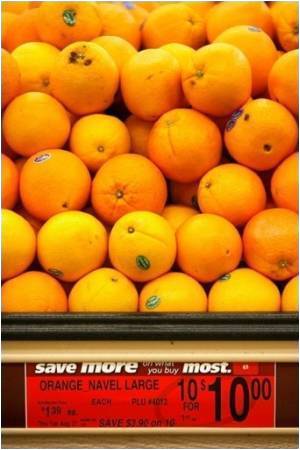
"Our improved understanding of this trait could offer relatively straightforward solutions to growing blood oranges reliably in warmer climates through genetic engineering."
The pigments are anthocyanins, flavonoids that give red, purple and blue fruit their colour. Previous studies have shown that drinking blood orange juice reduces oxidative stress in diabetic patients, protects DNA against oxidative damage and that it may reduce cardiovascular risk factors more generally, as demonstrated for other high-anthocyanin foods.
A 2010 study found that blood orange juice limits the development of fat cells and weight gain in mice and provides resistance to obesity compared to blond orange juice or water.
Blood oranges are grown outside Sicily, for example in Japan, South Africa and Iran. But in some years entire harvests are lost because the right conditions cannot be created during ripening. Or in Florida and Brazil, the anthocyanin content is weak and unreliable.
The scientists isolated the Ruby gene from the flesh of blood and blond oranges. They found that it is controlled by mobile genetic elements that are activated by the stress of cold.
Advertisement
"Our results offer little hope of conventionally breeding or identifying new varieties of blood orange that are free from cold dependency," said Martin.
Advertisement
Blood oranges are a derivative of sweet orange, the most commonly grown fruit tree in the world. The current study, to be published in The Plant Cell, also confirmed that sweet oranges are a hybrid between the Southeast Asian pummelo and mandarin.
The research was funded by an EU project focused on flavonoids, FLORA, an EU project called ATHENA focussed on anthocyanins and polyphenols, a studentship from the John Innes Foundation, strategic funding from the Biotechnology and Biological Sciences Research Council (BBSRC) and the Italian Agronanotech project.
It led the scientists on an historical as well as scientific journey, unearthing the earliest paintings featuring blood oranges, 19th century botanical drawings and their earliest mentions in historic texts.
Source-Eurekalert












